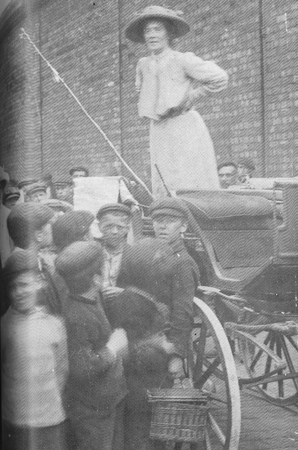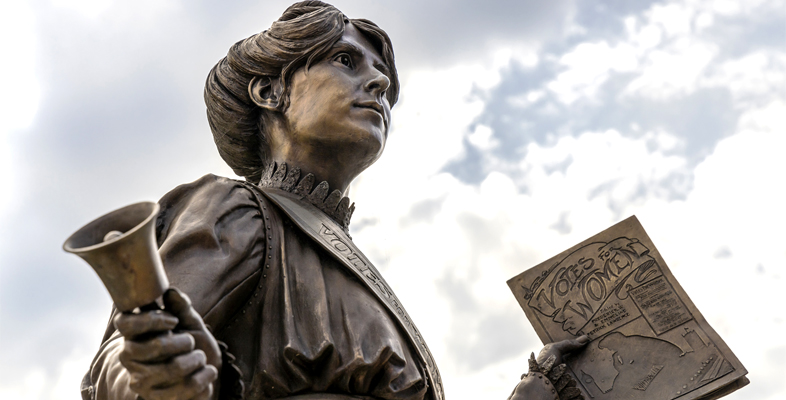3.3 Joining the campaign for ‘Votes for Women’
Ada Nield Chew became involved in the campaign for the vote as a suffragist during the period 1911–14. She believed that the vote was just the first step in removing the many social and economic burdens which restricted the lives of the working classes. She approached it first as a member of the early Labour Party. In 1911 she became secretary of the Women’s Labour League. Although women did not have the vote, they could work to support election campaigns, and Nield Chew was involved in campaigns at Holmfirth (1911), Crewe (1912), Midlothian (1912) and several others in 1913 and 1914. Figure 5 shows Nield Chew campaigning for the Independent Labour Party (ILP) at the Crewe by-election in 1912. Eventually, however, she was to dissociate herself from any particular political party. She became a noted speaker and, although Labour candidates didn’t win seats, the suffragists probably managed to prevent Liberal candidates from winning.

Ada Nield Chew’s story underlines the fact that individual women came to protest against women’s lack of the vote by several routes and were not necessarily convinced suffragists from the very start. Nield Chew was first and foremost a campaigner for better working conditions and greater opportunities for women and she saw women’s suffrage as a way of securing those.
